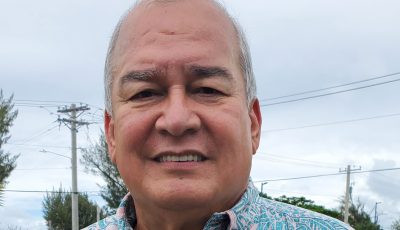The solar multiplex
What first was sci-fi dreaming has become a growth opportunity. A solar panel enterprise just opened a branch on Saipan and though it comes later than when we started edging the use of an abundant resource in our part of the world, it is never too late.
I taught in China in the last four years, three of them at the Hang Gong Hang Tian Da Xue aka the Shenyang Aerospace University. The region called Dong Bei (northeast China)—better known as Manchukuo to Nippon and Manchuria to elders who saw the Manchurian Candidate where Korean theatre US POWs were taken by Russian captors to Manchuria and allegedly brainwashed by handlers, playing at the box office during JFK’s Cuban crisis—inspired US Congress protest on “photovoltaics of Manchurian proportion.”
China has a prominent windmill farm that is a sight on the highway in Manchuria to hit alternative energy at the border of Liaoning and Jilin. The contribution of Chinese companies before 2010 on solar panels bloomed to a competitive effort when the Chinese government offered favorable financing of development and manufacturing, driving the global price down by 40 percent in five years, alarming Washington as three U.S. companies bellied up after what has since been dubbed as “Manchurian” competition.
In 2013, converted solar energy constituted not even 1 percent of total production, and though the onslaught of photovoltaics in street and road lights proliferated in China, as well as water heaters on rooftops, it was minuscule compared to the burning of coal that added carbon into the atmosphere, abetting the phenomenon of climate warming.
Summer of 2014, I bid friends and relations adieu in the North American continent, an uneventful occurrence save observations on policies on fuel in both the U.S. and Canada. Personally opposed to the construction of the Keystone XL pipeline to transport the liquefied tar sands of Alberta south to the refineries in Texas, I noted lobbyists hungry for the Chinese model of government financing of business ventures dubbed opposition to the effort as being “anti-business.”
I oppose the efficiency of converting the fuel into useable form, an expensive process that the lobby would like to have the government carry in the same way that indirect subsidy undergirded oil refinements, no thanks to politicians from Texas. (I attended SMU in Dallas in the late ’60s and early ’70s.)
The ecological basis for opposition to Chinese photovoltaics is sound. The processing of silica involves toxic effluents that makers have not been able to effectively dispose well while competitors who did allegedly paid high.
China adopted the operational style of “playing by the books” in governance 2013 and with enlightened ecological policies already on record, electric cars found home in the China market. Came California’s Tesla, the battery manufacturer turned car enthusiast who ventured into the China market with warm welcome but have failed to deliver the charging stations needed for its cutting edge electric cars.
We cannot overestimate the power of the oil industry cartel. Reducing dependence on fossil fuel has no shortage of criticism, documented and well marketed, of the deficiencies if not dangers surrounding the use of alternative energy. Electric car sales experienced a downturn in the last four years in NA because of the shortage of charging stations, while oil pumps proliferated in every city corner. Texas hats among the power boys tend to keep their hats intact, even as Mobil-Shell on island monopolize the market where photovoltaics are moving into. (BTW, we have nothing against Mobil-Shell in the NMI; friends are in their employ. It is the industry picking on the new guys on the block that is unjustified, though understandable.)
Canada and the United States’ policies on electric cars is not friendly, or, at best, it placed development on hold especially at a time when oil supply is cheap, at a glut, and storage of the fossil fuel has spilled out off the rim. Diesel engines offer a bright ecological future as biodiesel can replace petrodiesel (clean petrochemicals is an oxymoron) but the volume of use is negligible!
Like the Wright brother’s controlled aircraft at Kitty Hawk, the event took time before it became commercially acceptable; it did not help that the Wright’s patent was on the control of their 1902 glider rather than on the engine of the flying machine. Wright’s experience is instructive to illuminate what alternative energy enterprises go through.
Undeterred use of solar panels, however, continues. Totally solar-powered engines on cars, trains, bikes, planes, and ships, along with energy harvesters and converters in buildings and fields now litter the news. A totally solar powered Hummer is no longer a dream, and an airplane just flew in from Chongqing to Nanjing on a round-the-world journey on solely the heat of the sun.
The CNMI has abundant supply of the resource, sun and silica. We welcome the NMI to the times!



























